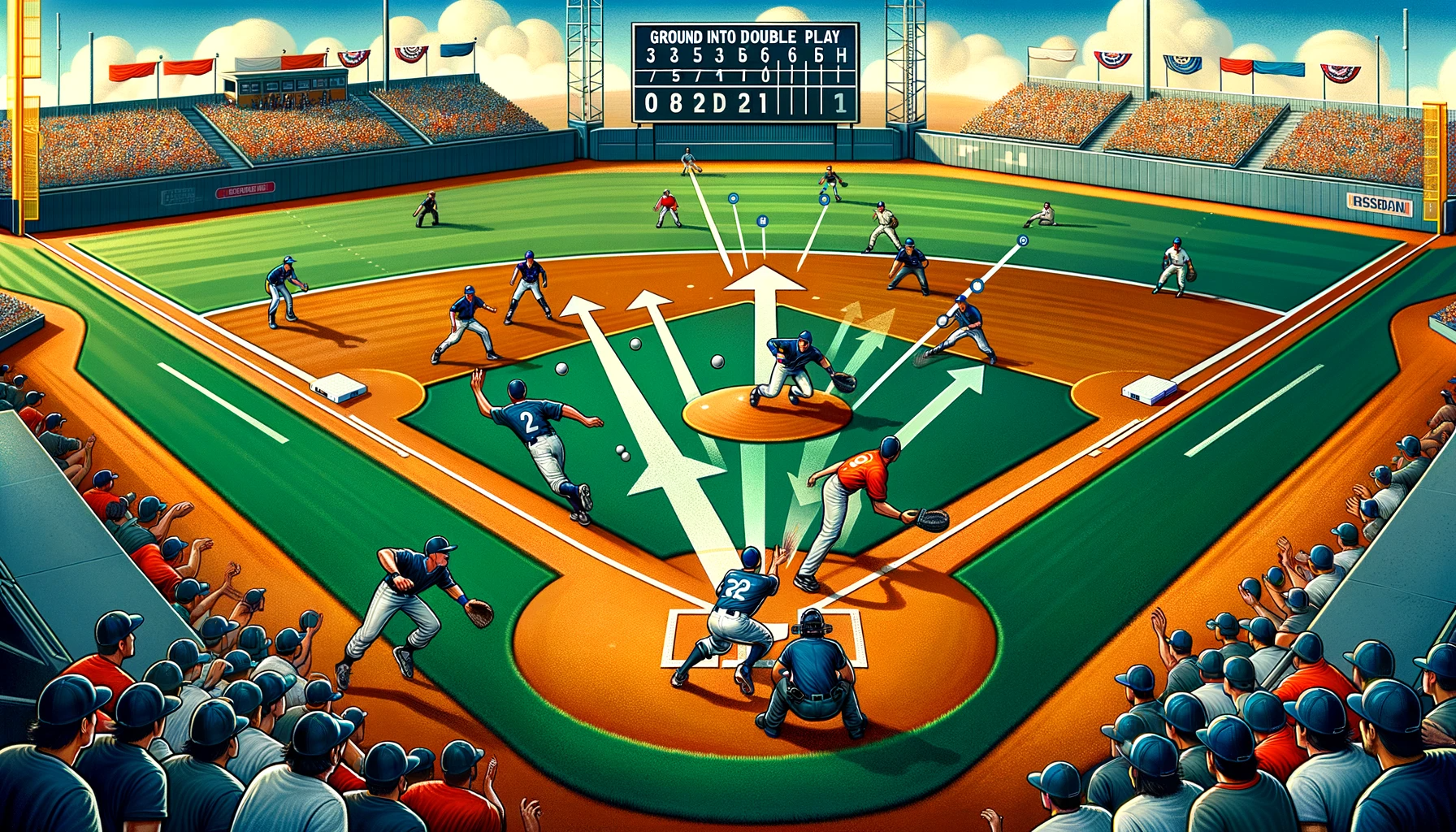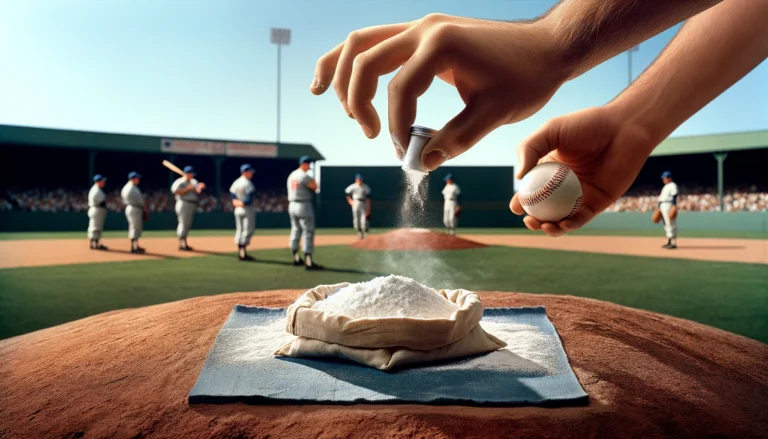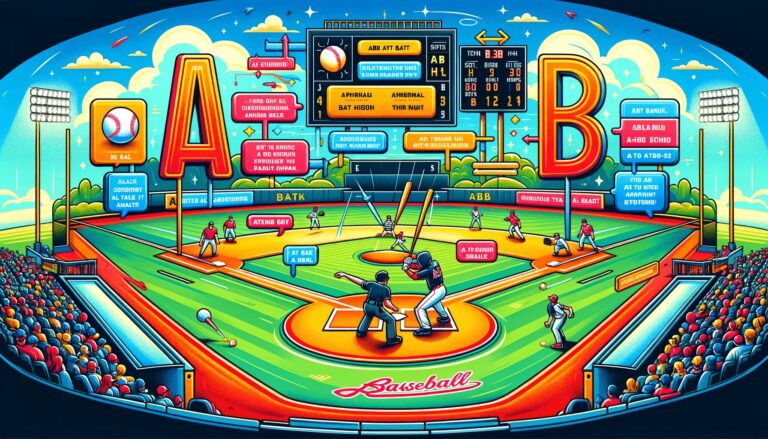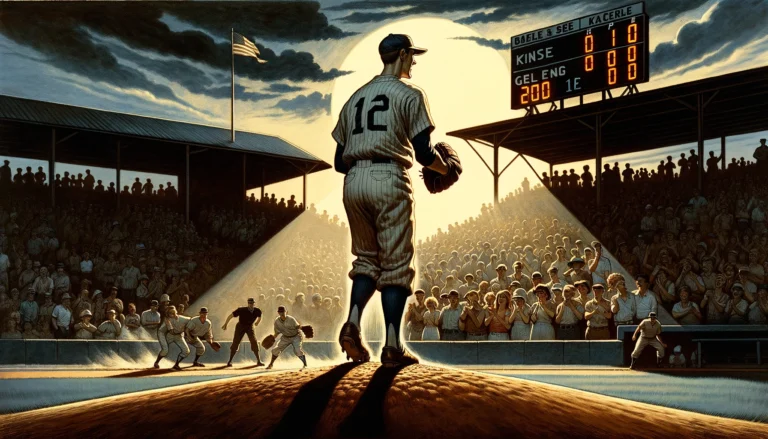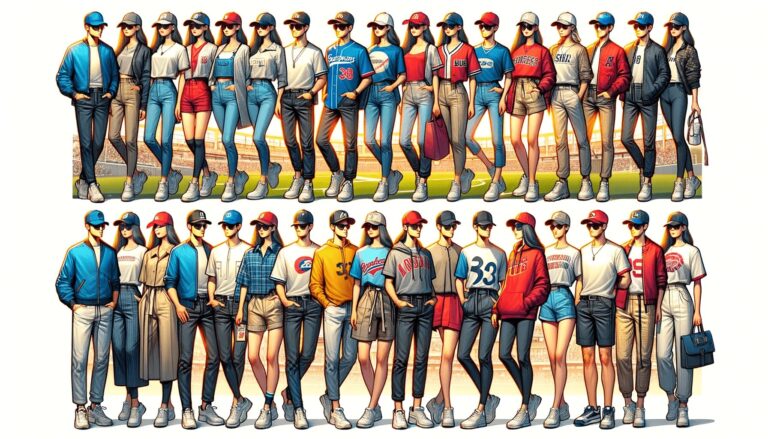What Does GIDP Mean in Baseball?
GIDP stands for “Ground Into Double Play.” This happens when a batter hits a ground ball, and the defense can get two outs on the same play. The batter is out at first base, and another runner is forced out at second, third, or home plate.
In this article, we’ll explore how GIDP works, why it’s important, and what impact it has on the game. Whether you’re new to baseball or just looking to understand the game better, keep reading to get all the details.
Key Takeaways
- GIDP is a critical event that can instantly change the course of an inning by removing two offensive players with a single play.
- The successful execution of a GIDP requires precise coordination among infielders and is influenced by various pitch types and game situations.
- Historically, GIDP has played a significant role in baseball, with certain players and games being notably affected by this statistic.
- Advanced metrics in the analytics era have provided deeper insights into the impact of GIDP on game strategy and player performance.
- The psychological effects of GIDP on both hitters and fielders can be profound, influencing the mental approach to at-bats and defensive plays.
The Mechanics of GIDP: How Double Plays Unfold

Defining a Ground Into Double Play (GIDP)
A Ground Into Double Play, commonly abbreviated as GIDP, occurs when a batter hits a ground ball that leads to two outs being recorded in the same continuous play. This typically happens when there are runners on first base and less than two outs.
The sequence of a GIDP usually involves the following steps:
- The batter hits a ground ball to an infielder.
- The fielder catches the ball and throws it to a teammate at second base.
- The player covering the second base steps on the bag for the first out and then throws to the first base.
- The first baseman catches the throw for the second out, completing the double play.
Successfully executing a GIDP requires precise coordination among infielders and is one of the most efficient ways to halt an offensive rally.
It’s a statistic tracked in baseball to evaluate both the batter’s tendency to hit into double plays and the defense’s ability to execute them.
The Infield Dance: Positioning and Execution
The choreography of an infield defense during a Ground Into Double Play (GIDP) is a sight to behold.
It begins with the middle infielders, typically the shortstop and second baseman, who are the keystones of this defensive maneuver.
Their positioning is crucial; they must be close enough to the base to receive a throw but also positioned to cover the maximum range of the infield.
- The shortstop prepares to field the ball and make a quick transfer to the second baseman.
- The second baseman positions himself to receive the throw and pivot towards first base.
- The first baseman readies to complete the play by catching the final throw and securing the out.
Timing and precision are paramount, as even a split-second delay can result in a failed double play.
The practice of turning a GIDP is a fundamental drill for infielders, often rehearsed with a coach using a fungo bat to simulate game situations.
This drill, known as the 4-6-3 double play, is a classic example of infield coordination and skill.
Pitch Types and Situations Prone to GIDP
Certain pitch types are more likely to result in a Ground Into Double Play (GIDP), particularly those that induce batters to hit ground balls.
Sinker and splitter pitches, for example, are designed to dive down as they approach the plate, increasing the chances of a batter making contact with the top half of the ball.
This often leads to ground balls, which are the bread and butter of double plays.
In addition to pitch types, specific situations set the stage for GIDP. These include:
- A runner on first with less than two outs
- A slow-footed batter at the plate
- A pitcher with a high ground ball rate
Understanding these scenarios can help teams strategize to either capitalize on a GIDP opportunity or avoid falling victim to one.
Read Also: What Does BB Mean in Baseball
Statistical Impact of GIDP on Baseball Games

Quantifying the Damage: GIDP’s Effect on Scoring
The Ground Into Double Play (GIDP) is a baseball statistic, that can have a profound impact on a team’s scoring potential within an inning.
By swiftly turning two outs from a single play, GIDP not only removes baserunners but also clears the bases, often quashing a potential rally.
- GIDP reduces the number of outs a team has to work with, effectively cutting short their opportunity to score.
- It increases the number of outs recorded against a team, which indirectly affects key offensive statistics. For instance, outs figure indirectly into major statistics like batting average and on-base percentage, as they increase the denominators but not the numerators.
- The psychological effect of a GIDP can be just as damaging as the statistical impact, as it can deflate a team’s morale and momentum.
Understanding the statistical repercussions of GIDP is crucial for teams when strategizing their offensive approach, especially in high-stakes situations where every at-bat counts. You may read the guide on What Does E Mean in Baseball
Historical Perspective: Notable GIDP Records
Throughout the history of major league baseball, certain players have etched their names into the record books with their propensity for hitting into double plays.
Albert Pujols stands out with a staggering 426 GIDP, leading the pack among all hitters. His ability to make contact and drive the ball, despite the risk of grounding into a double play, has been a hallmark of his career.
Following Pujols, Miguel Cabrera has grounded into 364 double plays, showcasing a similar blend of power and contact that, while productive, also leads to GIDP situations.
Both players, with their impressive resumes, are strong candidates for the Hall of Fame, illustrating that GIDP numbers alone do not define a player’s legacy.
The list continues with notable names such as Cal Ripken Jr. and Ivan Rodriguez, who have also had their share of GIDP moments.
These records highlight a fascinating aspect of the game: even the most successful hitters can fall prey to the most common double plays in play, a testament to the complexity and unpredictability of baseball.
GIDP in the Analytics Era: Advanced Metrics
In the analytics era, GIDP has become a focal point for sabermetricians. Advanced metrics have been developed to better understand the impact of double plays on game outcomes.
These metrics take into account not just the number of GIDPs, but also the situations in which they occur, and their timing to the game’s progress.
Key advanced metrics include:
- GIDP Opportunity Rate (GIDPOR), which measures the frequency of double play opportunities a player has.
- Double Play Runs Saved (DPRS), is an estimate of the number of runs a player saves by turning double plays.
- Situational GIDP Value (SGV), which assesses the change in win probability after a GIDP.
These metrics allow teams to quantify the damage caused by GIDPs more precisely and to tailor their strategies accordingly.
Players are evaluated not only on their ability to avoid GIDPs but also on their skill in capitalizing on GIDP situations defensively.
As a result, the understanding of baseball hitting and baseball statistics also has evolved, influencing decisions on lineups, defensive shifts, and in-game tactics.
Read Also: What is a Crooked Number in Baseball
Players and Strategies: The GIDP Influence

Notorious GIDP Hitters and How They Adjust
Certain batters have gained a reputation for frequently grounding into double plays, often due to their hitting style or lack of speed.
Players like Albert Pujols and Miguel Cabrera, despite their impressive batting records, have found themselves atop the GIDP leaderboard in various seasons.
To combat this tendency, hitters often make strategic adjustments. These can include:
- Altering their swing to prioritize hitting the ball in the air rather than on the ground.
- Working on bat speed and contact to reduce the chance of hitting into a fielder’s choice.
- Focusing on pitch selection to avoid low pitches that are more likely to result in ground balls.
Coaches and players collaborate to analyze game situations and defensive alignments, tailoring their approach to minimize the risk of grounding into a double play.
This ongoing adjustment is a testament to the dynamic nature of baseball strategy and the continuous effort to optimize performance.
Pitchers Who Induce GIDP: A Tactical Advantage
In the chess match that is baseball, pitchers who can induce a ground into a double play (GIDP) hold a significant edge.
These pitchers have a knack for escaping jams with a single pitch, turning a threatening inning into a momentum swing for their team.
- Mastery of sinkers and splitters is often a common trait among these pitchers, as these pitches are more likely to result in ground balls.
- Strategic pitching, especially in high-pressure situations with runners on base, can lead to a higher GIDP rate.
Understanding the tendencies of hitters is also crucial. For instance, a pitcher might be aware that Bryce Harper has grounded into the most double plays this season, using this knowledge to their advantage when facing him.
Similarly, knowing the GIDP statistics of Manny Machado, Jake Cronenworth, Luis Campusano, and Alek Thomas can influence a pitcher’s approach in crucial at-bats.
Managing the Game: Strategic Decisions to Avoid GIDP
In the chess match that is baseball, managers employ various strategies to sidestep the rally-killing GIDP.
One key tactic is the hit-and-run play, which sets runners in motion and can disrupt the infield’s ability to force play back to turn two.
Additionally, managers might:
- Opt for contact hitters who excel at putting the ball in play and overpower hitters who might hit into a GIDP.
- Encourage batters to focus on hitting fly balls or line drives rather than ground balls.
- Utilize speedier runners who can more easily beat out throws to first base.
Understanding the tendencies of their own players, as well as the defensive capabilities of the opposition, is crucial for managers.
They must also consider the game situation, such as the score, inning, and the pitcher on the mound.
A well-timed stolen base or sacrifice bunt can also be effective in avoiding the dreaded double play.
Read Also: What Does R Mean in Baseball
The Psychological Aspect of GIDP
The Inning Killer: Mental Impact on Hitters
The psychological weight of grounding into a double play (GIDP) can be a heavy burden for hitters. It’s not just an out; it’s a rally-ending play that can deflate an entire team’s morale.
The mental game is crucial in baseball, and the fear of hitting into a GIDP can alter a batter’s approach at the plate, sometimes leading to hesitation or overcompensation.
Players may experience a range of emotions after grounding into a double play:
- Frustration at the missed opportunity to contribute to the team’s offense.
- Anxiety about future at-bats, especially in similar situations.
- Embarrassment, particularly if the GIDP occurs during a critical moment of the game.
To combat the negative mental impact, players often work with coaches and sports psychologists to develop coping mechanisms.
These can include visualization techniques, routine adjustments, and focusing on the next opportunity rather than dwelling on past mistakes.
The goal is to maintain confidence and a positive mindset, which are essential for overcoming the challenges posed by GIDP.
Momentum Shift: How GIDP Energizes the Defense
The occurrence of a Ground Into Double Play (GIDP) can be a pivotal moment in a baseball game, often leading to a surge of energy within the defensive team.
This momentum shift is not just a feeling; it’s a tangible change that can alter the course of an inning or even a game.
- The immediate effect is a boost in confidence among the infielders, who feel a sense of accomplishment after executing a challenging play.
- Pitchers benefit from the reduced stress of fewer runners on base, allowing them to pitch more aggressively.
- The team as a whole rides the wave of positive energy, which can lead to sharper focus and better performance in subsequent plays.
This shift in momentum can have a psychological impact on both the batter and opposing team as well, often leading to a noticeable dip in their offensive aggression.
The knowledge that their efforts can be undone by a well-timed GIDP may cause hitters to second-guess their approach, resulting in a more cautious or less effective offense.
Coping Strategies for Teams Prone to GIDP
Teams that frequently find themselves grounding into double plays must adopt effective coping strategies to mitigate this disadvantage. A proactive approach can significantly reduce the occurrence of GIDP situations.
- Prioritize speed and agility training: Enhancing base runners’ quickness can disrupt the timing of the defense, making it harder to turn two.
- Emphasize situational hitting: Batters should focus on hitting the ball in the air or placing it where defenders are not positioned.
- Strategic lineup adjustments: Incorporating “Three true outcomes” (TTO) hitters, who are less likely to put the ball in play on the ground, can alter the dynamic of the inning.
By implementing these strategies, teams can not only decrease their GIDP numbers but also apply pressure on the opposing defense, potentially leading to more scoring opportunities and a shift in the game’s momentum.
Read Also: What is MVR in Baseball
Conclusion
In summary, GIDP stands for “Ground Into Double Play” in baseball. It’s a play where two outs are made off one hit, which can quickly shift the momentum of the game.
Understanding terms like GIDP helps fans appreciate the strategic aspects of baseball more deeply.
So next time you watch a game and see a GIDP, you’ll know exactly how significant that defensive play really is for the teams involved.
Frequently Asked Questions
What does GIDP stand for in baseball?
GIDP stands for Ground Into Double Play, which is a statistic that tracks when a batter hits a ground ball that results in two outs from one, unassisted double play.
How does a GIDP occur?
A GIDP occurs when a batter hits a ground ball to an infielder, who then throws to a base to get out, and the ground ball hit there is then relayed to another base to get a second out before the batter reaches first base.
Why is the GIDP considered a negative outcome for the batting team?
The GIDP is considered negative because it removes two baserunners and generates fewer than two outs each, which significantly decreases the batting team’s chances of scoring in that inning.
Can you name some pitchers who are known for inducing GIDPs?
While the list can change over time, historically, pitchers like Greg Maddux, Derek Lowe, and Brandon Webb were known for their ability to induce ground balls that led to double plays.
What strategies can teams employ to avoid hitting into GIDPs?
Teams can use strategies like the hit-and-run play, where the runner starts running before the pitch is hit, or they can stack their lineup with hitters who have a high contact rate and speed, which makes it harder to turn double plays.
How has the analysis of GIDP evolved in the analytics era?
In the analytics era, teams use advanced metrics like Ground Ball Rate (GB%) and situational statistics to better understand a player’s tendency to hit into GIDPs and to develop strategies to mitigate this outcome.

